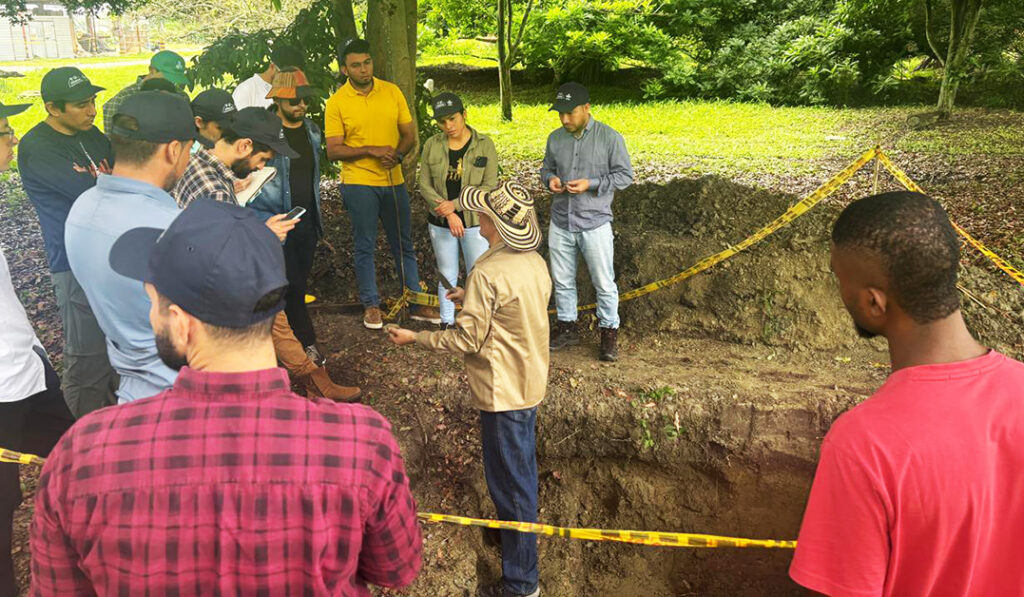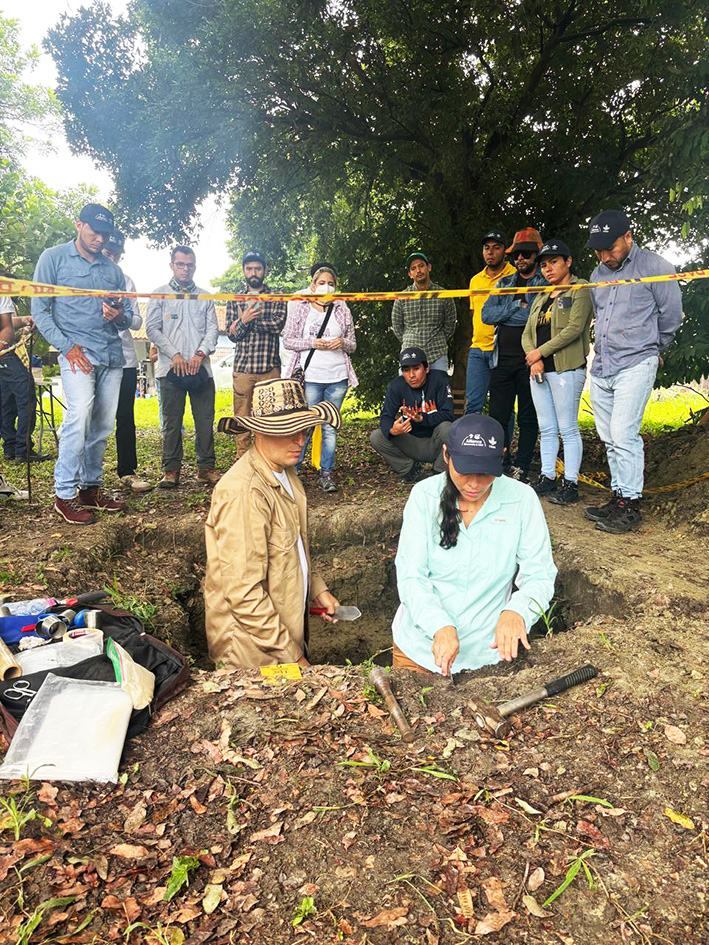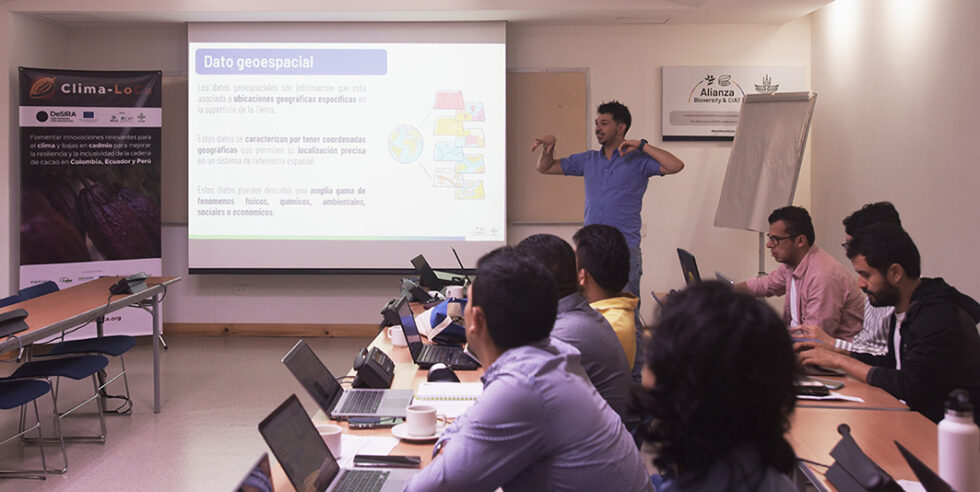The Clima-LoCa project, led by the Alliance Bioversity-CIAT , is spearheading an initiative to strengthen national capacities in digital soil mapping (DSM) and support the generation of maps of cadmium and physicochemical properties in soils in the cocoa-growing areas of Colombia, Ecuador, and Peru.

Part of the workshops held on the campus of the Alliance Bioversity International and CIAT.
Cadmium (Cd), which occurs naturally in the Earth’s crust, is a heavy metal that can pose a risk to human health when ingested in high concentrations through food, water, air, or other sources. Its detection in cocoa beans has led to the implementation of permissible limits for this element in cocoa products, recently established by the European Union and other international regulations, with the aim of ensuring food safety and protecting public health. For more information, see Clima-LoCa’s Fact Sheet #1.
In this sense, this initiative is of great importance for the Andean cocoa region, as it will provide a better perspective of the spatial variability of Cd in the region’s cocoa soils and its relationship with the accumulation of this element in cocoa beans. This site-specific information is very useful for identifying the main factors related to cadmium accumulation in cocoa for a given region and thus defining strategies for its mitigation. It also facilitates the identification of areas at greater risk of being affected by safety regulations, which in turn contributes to better-informed land-use planning.

Participants in the soil mapping course developed with partners at the Alliance Bioversity International and CIAT campus in Palmira, Colombia.
Javier Martín, development coordinator and researcher at the Alliance Bioversity and CIAT , highlights:“Without a doubt, one of the great advantages of this development has been the participation of experts from different countries and organizations, who, based on their experience and professional diversity, have contributed significantly to the discussions and to a deeper understanding of cadmium behavior in cocoa landscapes.”
Among the institutions participating in this initiative, led by CIAT, are: The Agustin Codazzi Geographic Institute (IGAC) and the Colombian Geological Service (SGC) on behalf of Colombia, the Ministry of Agriculture and Livestock (MAG) of Ecuador and the Escuela Superior Politécnica del Litoral (ESPOL) on behalf of Ecuador, and the Alliance Bioversity International & CIAT, and the National Institute of Agricultural Innovation (INIA) on behalf of Peru.

